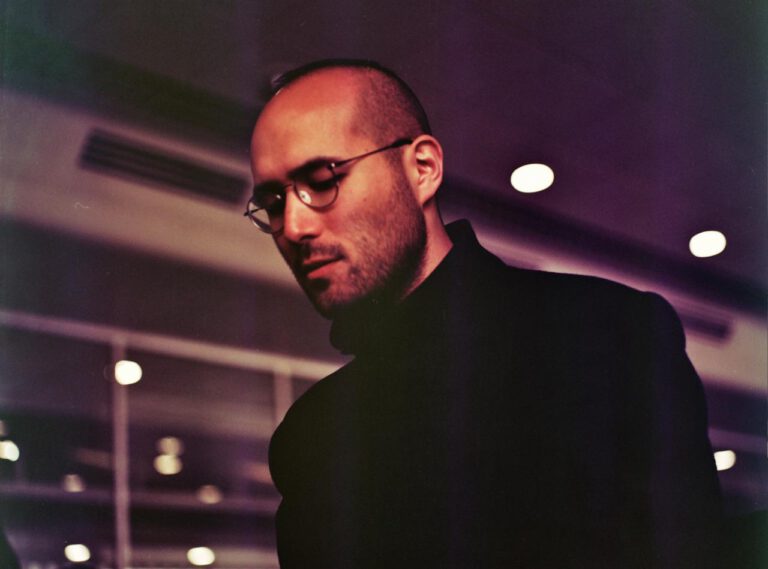by Jon Davies
Noticing the opportunities of failing institutions: a reflection
Originally this essay was to expand on the current discourse in the arts on ‘Interdependence’, however in light of Coronavirus and the Black Lives Matter movement my focus has changed to examining our relationship to the socioeconomic field of creativity. In this essay I explore the recent history of market-state dynamics in the arts in the UK, and how the institutions that are gatekeepers limit and obstruct artmaking as a way of reimagining our lives.
At the end of last year I wrote an essay titled “Interdependence, or how I learned to love the dancefloor again,” for FACT magazine, which outlined the ways in which (what’s left of) the countercultural music community was speculating towards new ways of restructuring the social field we participate in. With the closure of venues, restriction of travel and loss of income for artists due to Coronavirus the way that art making survives has come into sharp focus. The past decade of austerity has left funded arts prostrate to market dynamics and the desires of the state to reshape culture in Britain and define its legacy (most notoriously the 2012 Olympics). However our relationship towards art and creativity in its current form lies with the beginnings of New Labour, which situated artists as in many ways a precursor to the freelance, precarious and entrepreneurial individuals which make up a large percentage of the working population.
From examining the economic limitations and the social implications of creative entrepreneurialism I then look at how the arts institutions are limited in responding to social justice issues, and unable to engender real change in our societies and communities as they currently exist. This then poses the question as to whether we reform, or leave the institution, and speculates on the role of an artistic community that works interdependently.
Artists making income and Creative Britain
As of June 14, 9.1 million jobs have been furloughed in the United Kingdom under the Conservative government’s job retention scheme, and within the initial month after the lockdown the unemployment level jumped to 2.1 million. In the arts the self-employment sector occupies a large percentage of workers, including artists, producers, gallery technicians, consultants, writers and more. Anecdotally, my experience in the arts is that many organisations and institutions have small core teams while employing many others on short term contracts, as well as a surplus of zero-hours employees and volunteers that steward and invigilate venues. This lean employment structure has been exposed during the pandemic, with events teams furloughed (calculated from already breadline wages), exhibitions and festivals cancelled and no definite resuming of the annual programme calendar leaving freelancers in limbo.
Since the turn of the century the self-employed sector in the UK has increasingly become a large percentage of the country’s workforce (1 in 7 in 2015 according to the RSA), originally framed as giving individuals a greater sense of autonomy and ownership of their labour. Since the global financial crisis of the late 2000s successive British governments with the Conservatives as the main party have encouraged self-employment, partly through a neoliberal ideology of opportunity through self-actualisation but by no small part to help reduce the number of people unemployed as austerity measures across the UK’s economy took place. The language around unemployment as well as the transition from Jobseeker’s Allowance to Universal Credit’s automated and punitive system has led to an environment which pitches “strivers against shirkers.” This, coupled with suppressed wages and variable “gig” hours, has given rise to ‘the precariat’ as a significant group of workers in the economy.
This type of work is native to artists, and according to Rosalind Gill and Andy Pratt’s key post-Fordist text “In The Social Factory?” it is highlighted that artists are, along with “(new) media workers and other cultural labourers… hailed as ‘model entrepreneurs’ by industry and government figures [and] are said to be iconic representatives of the ‘brave new world of work’ in which risks and responsibilities must be borne solely by the individual.” This laid the foundations of how the British economy began to map its labour force towards the beginning of the 21st century. During the early 1990s, according to Jeremy Gilbert through Owen Hatherley’s musings on Manchester’s post-Thatcher regeneration schemes, New Labour had identified Britain’s emerging culture as a key economic sector in which to build from the austerity of the 1980s:
#ACFM Microdose: Musical Cities, March 2020
This is confirmed by the 1998 “Creative Industries Mapping Document”, which became instrumental as part of New Labour’s initial manifesto to modernise Britain. Its consequences included the further professionalisation of artistic labour as a focus of boosting gross domestic product, as well as the increased gatekeeping of culture in the UK through funding pots for commissions and development as opposed to the romantic notion of artists taking Jobseeker’s Allowance to sustain themselves (mostly found in stories of punk bands in the 1980s). As the transition from Labour to the Conservative-Liberal Democrat coalition brought in sweeping austerity measures, including a 30% cut in the Department for Culture, Media and Sport between 2010 and 2014, the lifeline to many cultural institutions, and in effect arts workers that applied for funding, was cut drastically over the past decade. This, along with the draconian atmosphere towards unemployment, meant that creative and artistic opportunities became slimmer, more competitive, and increasingly interfered with by the state’s cultural mission.
From a personal perspective, rather than applying for Universal Credit my creative output has been supported by short term contracts and zero-hours work, nearly a decade of ushering events, copywriting, journalism, and events production before taking on my first salaried job just before my 30th birthday. I live in one of the UK’s cheapest urban cities, Liverpool, which has relieved the pressure felt by many creative workers of paying high rents in metropolitan areas such as London and Central Manchester. However, competition for permanent, non-seasonal work (dependent on music festivals, biennials, and exhibition) remains difficult, so many art workers are over skilled, over experienced and under employed.
Institutions and Communities
In response to the murder of George Floyd, Breonna Taylor and Ahmaud Arbery, the demonstrations against police brutality, structural racism and the revival of the Black Lives Matter movement, the social media campaign ‘Blackout Tuesday’ was seen across digital platforms on the 2 June 2020. Black squares tagged #blackouttuesday and #blacklivesmatter was posted by numerous accounts, including arts institutions across the world. In response, the critics of art institutions began to flag up the hypocrisy of their statements, including an essay from Zarina Muhammad of The White Pube.
In “FUCK THE POLICE, FUCK THE STATE, FUCK THE TATE: RIOTS AND REFORM” Muhammad calls into question the legitimacy of public arts institutions, in so far as they are state funded, and that years of attempt to reform the racial biases of the art world have so far failed:
Zarina Muhammad: FUCK THE POLICE, FUCK THE STATE, FUCK THE TATE: Riots and Reform (The White Pube, June 2020)
The Black Lives Matter movement has demonstrated not only the limits of arts institutions as they are currently configured, but also the need to build space away from National Portfolio Organisations. However, the tentacles of publicly funded culture extend beyond the white cube and beyond the offices of arts organisations. I live a stone’s throw away from The Granby Four Street Community Land Trust (Granby CLT), which had received notable public attention in 2015 when the architect collective Assemble won the Turner Prize, a first for a “non-artist” project, having assisted in renovating a number of formerly boarded up houses to provide affordable home ownership. The prize demonstrated the emergence of socially engaged art in the UK landscape, but also demonstrated further the encroachment of entrepreneurialism in the arts sphere, and the changing role of the arts in response to austerity.
The Granby area is notable for being a socially deprived neighbourhood in one of the most socially deprived major cities in the UK, so for a group, originally based in London, to find a way to work collaboratively with a community represented the measurable success of art changing people’s lives. The result of Assemble’s work was not only limited to the housing renovations, but also established the Granby Workshop, a ceramics manufacturer that provided new jobs and specialist skills training for residents. However issues raised with the project were centred around the idea of ‘useful art,’ the fact that creativity should be put to use to boost the economy and better social realities for citizens that have been underprovided for by the state. Morgan Quaintance described the project as “a boon for the Conservative government” by producing a socially beneficial piece of work acritically, stripping Granby CLT’s context of having fought city councils, gentrification, Labour and Tory governments for at least four decades. Furthermore, austerity measures that have stripped social provisions such as public housing, health and social inclusion are deploying arts programmes to provide creative solutions towards the shortcomings of the state. Ranging from workshops that discuss technology-induced stress to providing film and food programmes for local communities, artists are coerced into participating as ‘model citizens,’ engendering a form of volunteerism, relying on the precarity and ingenuity of the creative class.
This leaves the questions of what is left of society outside of the state, if art making is subsumed as a quasi-welfare sector, as well as the conservator of culture. Returning to Zarina Muhammad’s call to abolish the institutions, we should first make demands on what that would mean in artmaking, whether it is the call for ‘useless’ art or to become opaque to the state. This is further complicated, or perhaps enlivened by the necessity to remake our world after the pandemic.
The end of the world and the beginning a new
Across the world, countries will be returning to remodelled realities, depending on the respective governmental responses. So far, the UK has not promised any funding to bail out the lost income of the arts, and local communities have been provided little guidance on how to restart. Economically, time has been lost, but there have also opened new possibilities to perhaps reimagine how we activate our world creatively, and collaboratively.
Everything is up in the air. With regards to the Black Lives Matter protests Tina Campt remarked the following:
Tina Campt – in: John Akomfrah in conversation with Tina Campt, Ekow Eshun, Saidiya Hartman, June 2020
The coronavirus has unveiled both the structure of the state and glimpses of the lack of structure of which to reinvent one’s daily life. It has told us of the violence of policing as it has of the violence every day that capitalism enforces on our week, our environment, and our health. For those furloughed, perhaps this has felt like going cold turkey on the travails of labour; to have your internal working structure halted, to be forced not to commute, not to spend more time in an office than at home.
Sharing a house with fourteen friends in Liverpool I have been witness to the radicles of changing ways of living. On top of the increased artistic collaborations between housemates (I share space with musicians mostly as well as an illustrator and graphic designer), shared learning, bird watching, tending a garden and increasing mutual care have kept us occupied. Those working from home (including myself) have also not missed the travel and have increased time with people you have chosen to have in your life. I know however that this is a luxury.
In the neighbourhood, the air is visibly cleaner due to the reduction of cars along the main road adjacent to our house, and bird song has welcomed the mornings more than ever. But the mortality rate in the UK still rises, disproportionately affecting the Asian and Black population, in no small part due to social inequalities. While Black Lives Matter marches in the US were directly in response to the murders of Black Americans under police custody, the UK protests also put forward the state negligence towards minorities. Under this circumstance marches and protests organised in solidarity with the cause took serious considerations to demonstrate publicly but responsibly, with Liverpool turning out around 7,000 people to march socially distanced from the Rialto, one of the sites of the Toxteth Riots in the early 1980s, to St George’s Hall in the city centre. Without the disruption and subjugation of the working week I doubt the turnout would have been as large, nor the time to organise the demonstration so carefully.
The financial economy is more than likely to fail in some capacity, with the dynamics of Coronavirus, Brexit and the already brittle social fabric all likely to play a part. And we must remember not only who is responsible for the predicament we are in now, but also how we are responsible for shaping a future that is fairer.
Interdependence to implication
In reflecting on the writings of Mat Dryhurst and myself ‘Interdependence’ is summarised by Gabe Meier as “a way out of the hyper-atomization of competing in a viciously competitive, deliberately precarious cultural market… hold[ing] an implicit understanding that survival is contingent on sharing resources, time and knowledge.” Social formations post-coronavirus can no longer wait on the market to be more just, and there is much work to do beyond the creative labour market.
It is important to find a way beyond performing progressive politics while profiting from the bodies that are unrepresented or exploited. Interdependence, a term I draw from Judith Butler, calls for the noticing of bodies and social violences to make a change within ourselves. However, I lament its lack of urgency.
I believe the project should broaden out beyond economic structures towards a political commitment, drawing inspiration from Tina Campt and Lola Olufemi.
Tina Campt – in: John Akomfrah in conversation with Tina Campt, Ekow Eshun, Saidiya Hartman, June 2020
Lola Olufemi – in: Race Today: Marginality, Inequality, Creativity and Belonging in Britain – A virtual panel event with Paul Gilroy, Lola Olufemi, Ciaran Thapar, Joy White and K Biswas, June 2020
The past four months have shown that many are tired of the institution, not just their organisation but the flow of social and economic capital, but the next few months could prove to be a rare opportunity to change them, or abolish them. Particularly for the arts, it is high time to question its benevolent posture, and for it to begin to bear responsibility.



